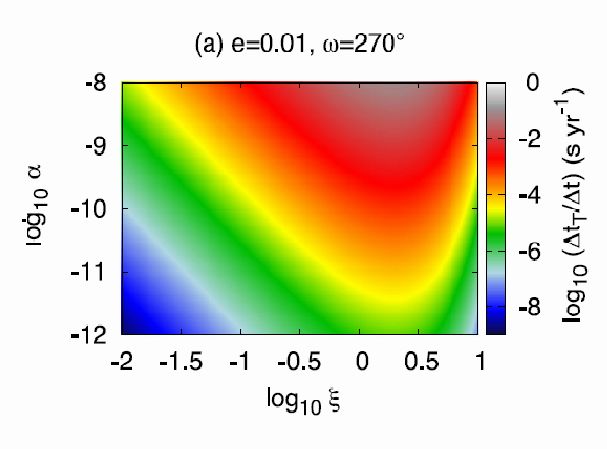Currently, more than 880 exoplanets have been discovered and about 300 of them are in the transiting systems. Ground-based and space-borne observatories studying exoplanetary transits now and in the future will considerably increase the number of known exoplanets and the precision of the measured times of transit minima. Variations in the transit times can not only be used to infer the presence of additional planets, but might also provide opportunities for testing new physics in the places beyond the Solar system.Inspired by the above idea, this research takes deviation from the inverse-square law of gravity as an example, focuses on the fifth-force-like Yukawa-type correction to the Newtonian gravitational force which parameterizes this deviation, investigates its effects on the secular transit timing variations (TTVs) and analyses their observability in exoplanetary systems. It is found that the most optimistic values of Yukawa-type secular TTVs are at the level of ~0.1 s per year. Those values unfortunately appear only in rarely unique cases and, most importantly, they are still at least two orders of magnitude below the current capabilities of observations. Such a deviation from the inverse-square law of gravity is likely too small to detect for the foreseeable future.
It is well known that exoplanetary systems are full of complexity so that many sources can trigger secular TTVs, such as GR, a stellar quadrupole moment, tidal deformations and a perturber. Thus, separating, discriminating and extracting various contributions in TTVs for positive detection require tremendous advances of techniques for observations and sophisticated methods of data analysis. Even so, such a large amount of confirmed and potential transiting exoplanets provide us with an new opportunity for testing physical laws of nature, especially fundamental theories of gravity, in the places beyond the Solar system.
Dr. Yi Xie of Department of Astronomy in Nanjing University and Dr.Xue-Mei Deng of Purple Mountain Observatory have been working on relativistic astrometry and celestial mechanics, reference system,
fundamental theories of gravity, and so on. They work together to do the research work, which is now published by the Monthly Notices of the Royal Astronomy Society (Jan 2014, Volume 438, page 1832-1838). This work is supported by the National Nature Science Foundation of China and the National basic research program of China (No. 11103010 and No. 1103085) and the Fundamental Research Program of Jiangsu Province of China (No. BK2011553 and BK20131461).
For more details, please see the following link: http://mnras.oxfordjournals.org/content/438/2/1832

By with DENG Xuemei
Figure 1. Colour-indexed tT/ t in four cases: (a) e = 0.01; (b) e = 0.1
(Information Source: Purple Mountain Observatory, CAS)

